Headrest for front seat

The headrest not only provides comfort for the driver and front passenger, but also helps protect the head and neck in the event of a rear collision.
For maximum effectiveness in case of an accident, the headrest should be adjusted so the middle of the headrest is as high as the center of gravity of an occupant's head. Generally, the center of gravity of most people's head is similar with the height of the top of their eyes.
Also, adjust the headrest as close to your head as possible. For this reason, the use of a cushion that holds the body away from the seatback is not recommended.

Headrest removal/adjustment
-
Do not operate the vehicle with the headrests removed. Headrests can provide critical neck and head support in a crash.
-
Do not adjust the headrest height while the vehicle is in motion. Driver may lose control of the vehicle.

Excessive pulling or pushing may damage the headrest.
Adjusting the height up and down
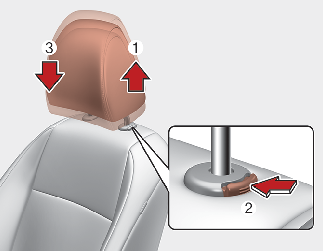
To raise the headrest:

If you recline the seatback towards the front with the headrest and seat cushion raised, the headrest may come in contact with the sun visor or other parts of the vehicle.
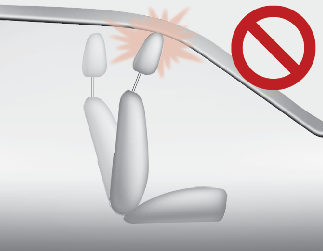
Removing headrest
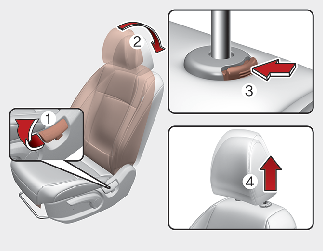
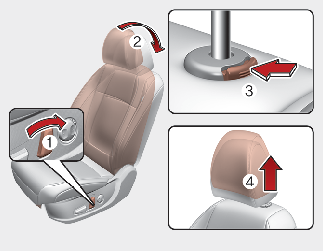
To remove the headrest:

Removing headrest
NEVER allow anyone to ride in a seat with the headrest removed or reversed. Headrests can provide critical neck and head support in a crash.
Reinstalling headrest
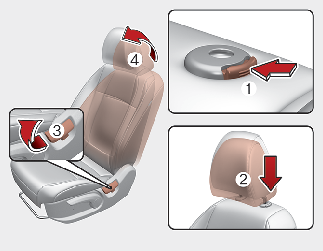
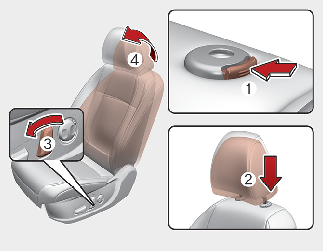
To reinstall the headrest:

Headrest Reinstallation
To reduce the risk of injury to the head or neck, always make sure the headrest is locked into position and adjusted properly after reinstalling.